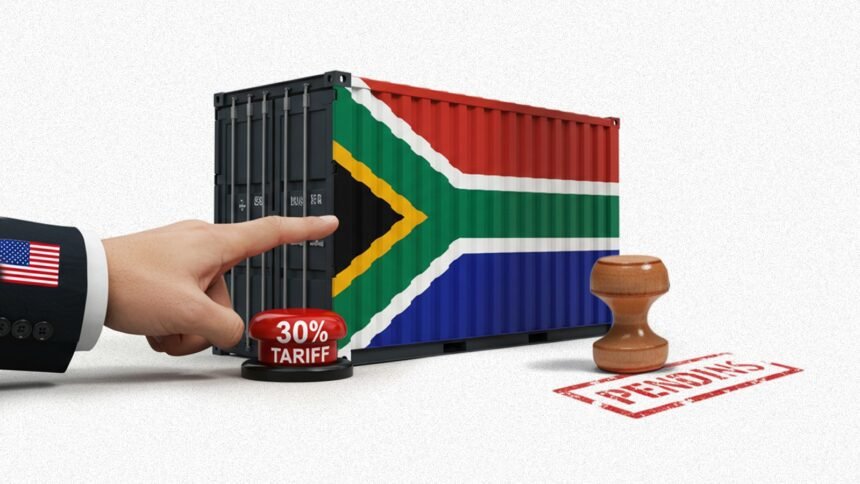With a potentially damaging 30% tariff looming over a significant portion of South African exports, the government in Pretoria is urgently seeking to negotiate a path forward with Washington to preserve favorable trade access under the African Growth and Opportunity Act (AGOA). The situation marks a critical juncture in the long-standing U.S.–South Africa trade relationship and highlights the geopolitical tension reshaping traditional alliances.
The dispute comes amid a broader reassessment in Washington of its trade partnerships with African nations. South Africa’s posture on global conflicts, particularly its non-aligned stance on Russia’s war in Ukraine and its high-profile genocide case against Israel at the International Court of Justice, has strained relations with the Biden administration. U.S. lawmakers have publicly questioned whether Pretoria still aligns with American foreign policy goals and values, and several voices in Congress have pushed for South Africa’s removal from AGOA entirely.
For South African exporters—especially in the automotive, agriculture, and wine sectors—the threat is immediate. The U.S. Department of Commerce is expected to announce by August 1 whether new tariffs will apply to products previously enjoying duty-free status. South African officials have described the stakes as “existential” for key industries, with thousands of jobs hanging in the balance.
South Africa is currently one of the largest AGOA beneficiaries, with exports to the U.S. totaling nearly $3 billion in 2023 under the preferential scheme. Citrus producers, who ship more than 100,000 metric tons of fruit to the American market annually, have warned that tariffs would make their products uncompetitive and lead to layoffs. The auto sector, which includes parts manufactured by German and Japanese carmakers with South African plants, faces similar pressure.
In response, South African officials have redoubled their diplomatic efforts in Washington. Ebrahim Patel, the Minister of Trade, Industry and Competition, led a delegation to the U.S. last week in a bid to defuse the situation. Pretoria has proposed enhanced compliance measures and a bilateral review mechanism to reassure American lawmakers of its economic and political alignment.
“We remain committed to our partnership with the United States,” Patel said during a press conference in Cape Town. “We believe AGOA has brought mutual benefits, and we’re ready to engage constructively to address any concerns.”
However, not everyone in the U.S. is convinced. Critics argue that South Africa has grown too close to rival powers, including China and Russia, and that continued trade preferences send the wrong message. “You can’t have it both ways,” one senior congressional aide said. “You can’t take our market access and then align yourself diplomatically with our adversaries.”
The Biden administration, for its part, appears to be walking a tightrope. Officials at the U.S. Trade Representative’s office have acknowledged South Africa’s economic importance and the wider implications of disrupting AGOA just as Washington seeks to deepen engagement with the continent. Yet, they have also stressed the importance of shared democratic values as a condition for trade cooperation.
Adding to the complexity is the upcoming expiration of AGOA itself in 2025. Many African governments, including South Africa, have called for the act’s extension, arguing that a longer horizon would attract more investment and strengthen U.S.-Africa trade ties. But internal divisions in the U.S. Congress—and the South African government’s diplomatic choices—may complicate any renewal efforts.
Analysts say the situation may come down to how much room Washington wants to leave for nuance. “AGOA was never just about economics,” said Dr. Naledi Molefi, a trade expert at the University of the Witwatersrand. “It was also about strategic partnership. The question is whether that partnership still holds under current conditions.”
For now, South Africa has less than 48 hours to find out whether it can salvage one of its most important trade relationships—or whether the first blows of a new era of transactional diplomacy are about to land. The outcome could define how both sides approach trade and politics across the continent for years to come.










